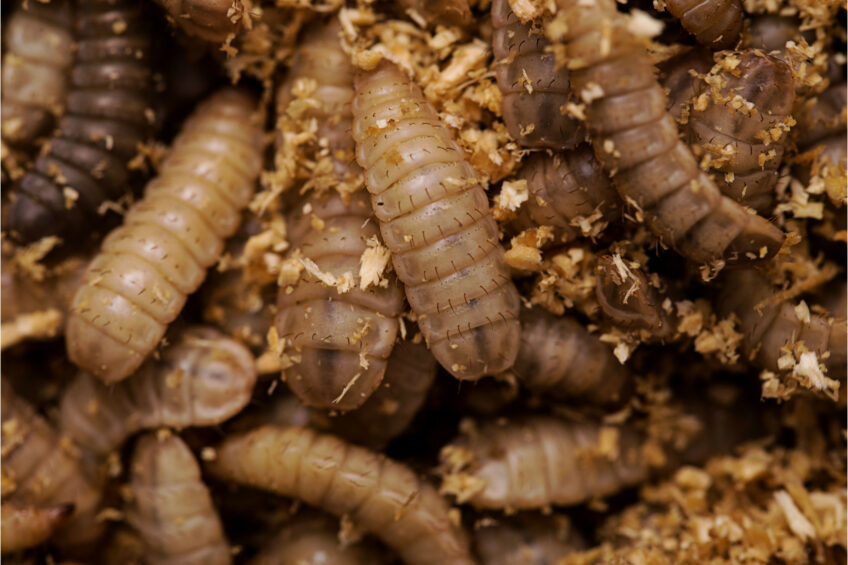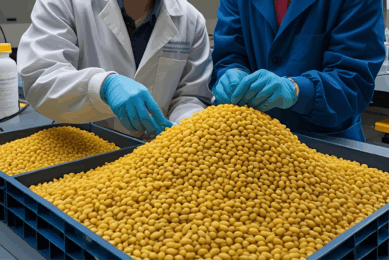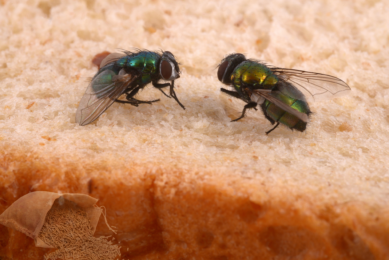Diversifying into insect farming

Insect farming can provide an opportunity to upcycle protein from organic waste back into the food system, delegates to last month’s British Pig and Poultry Fair were told.
Thomas Farrugia, chief executive and founder of Beta Bugs and Larry Kotch, from Flybox, shared insights into some of the insect genetics and technologies that are available to farm businesses considering diversifying into insect farming.
Insects for aqua & livestock feed
While globally many insects are farmed for animal feeds and human consumption, including honeybees, cochineal beetles, cockroaches, silkworms, waxworms, mealworms, crickets and lac insects, Farrugia focused on the black soldier fly, an insect species which can be put in feed for aquaculture, poultry, pigs and pet food.
Black soldier fly – excellent alternative protein
BSF contains 40-50% protein, making them an excellent alternative protein source for animal feed. They have a linear lifecycle which starts with the laying if eggs, which hatch into larvae, and then develop into pupae before hatching as adult flies. It is the larval stage that provides the protein source, so when farming them, Farrugia said it was important not to let them develop into the pre-pupal stage.
Using insect farming to reduce waste
The larvae are omnivorous and can be fed various food or agricultural waste as feedstock. Tesco announced recently that it had been working with the company Grinsect in Hungary to trial the use of insect farming to reduce food waste. In early 2023, the supermarket adapted its operating model to launch this innovative concept in 13 stores, sending surplus produced and bakery products to black soldier flies, which are then turned into insect protein and used as animal feed.
At present, feeding livestock, except for ruminants, is now EU law, and this is not a member state’s competence, although countries will still continue to ensure that operators comply with general safety and marketing requirements.
Insect frass
The larvae also produce frass – a dry and odour free manure which can benefit plant health. Potential markets for frass include garden centres, horticulture and regenerative farming operations. The International Platform of Insects for Food and Feed (IPIFF) has said it is committed to working on further optimising processing techniques of insect frass.
Boost poultry welfare
Farrugia said BSF can be fed live to poultry as a supplement to boost welfare, as it enables the birds to exhibit the foraging and pecking behaviours natural to them. The larvae can also be used to replace soya in animal feed diets. Nutritionally, BSF larvae offer a balanced amino acid profile, high levels of calcium and phosphorus and are also natural probiotics. They are also hypoallergenic, creating opportunities for producers to access premium prices by selling into the pet food market.
BSF larvae production
Kotch said BSF larvae could be produced on-farm in modular batch development systems. In these, the eggs are hatched and delivered to the farm as juvenile larvae, which are then reared in growing boxes and arranged in a vertical system for 7 days. At this point, they are ready to be separated from the frass and delivered to the customer.
Feeding the larvae
He added it was important for the feedstock to be presented correctly as the larvae have small mouths, meaning the particle size must be small and also moist and consistent, enabling them to feed at a fast rate. Pre-consumer byproducts such as brewers; grains, dairy byproducts and vegetable byproducts are all suitable feedstocks.
The speakers said BSF larvae could be classed as a low carbon protein for 2 reasons:
- They can reduce demand for soya protein for animal feed, which in turn reduces deforestation for soya production.
- By feeding organic waste to larvae, emissions from food waste are reduced while nutrients are upcycled back into the food system.











